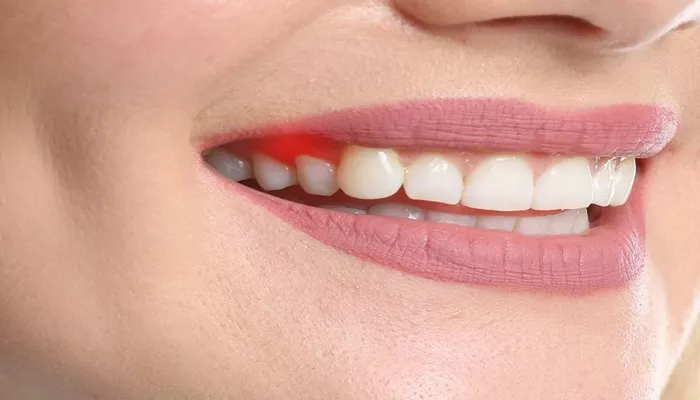Dental implants are a reliable solution for missing teeth. They restore function and aesthetics, but many patients wonder, “Will my gums grow back after implant?” Healthy gum tissue is vital for implant success. It supports the crown, protects the bone, and enhances appearance. This article will explore gum healing after implants, factors affecting regeneration, and related dental concerns like pericoronitis, sensitive teeth, and crowns. By the end, you will understand what to expect after implant surgery and how to care for your gums properly.
Understanding Gum Healing After Dental Implants
Natural Healing Process
After implant placement, the gums undergo a natural healing process. Initial swelling and inflammation are normal. Over time, the tissue adapts around the implant, forming a tight seal. However, full gum regrowth does not always occur automatically. Healing varies based on individual health and surgical precision.
Role of the Implant and Crown
The implant acts as a new tooth root. Once osseointegration occurs, a crown is attached. The crown’s fit impacts gum contour. A well-designed crown supports healthy gum appearance, preventing gaps or recession.
Factors Influencing Gum Regrowth After Implants
Pre-Existing Gum Health
Healthy gums before surgery promote better healing. Patients with periodontal disease or pericoronitis may experience slower or incomplete gum regrowth.
Surgical Technique
Precise surgical techniques minimize trauma. Flapless implant surgery, for example, preserves more gum tissue, encouraging faster healing and better cosmetic results.
Bone Support
Strong underlying bone supports the gum line. Bone loss can lead to gum recession even after successful implant placement. Bone grafts may be necessary in some cases.
Post-Operative Care
Following post-operative instructions is critical. Good oral hygiene, avoiding tobacco, and regular dental visits enhance gum healing around implants and crowns.
Can Gums Completely Grow Back?
Partial Regrowth
Gums often grow back partially around implants. They create a seal, but complete restoration to original levels is rare without surgical intervention.
Gum Grafting Procedures
When gum tissue loss is significant, gum grafting may be necessary. This procedure involves transplanting tissue to rebuild the gum line, improving both health and aesthetics.
Importance of Maintenance
Consistent care prevents further gum loss. Brushing gently, using a soft-bristled brush, and professional cleanings are essential.
Potential Complications That Affect Gum Healing
Pericoronitis
Although pericoronitis typically affects wisdom teeth, inflammation can occur around implants too. Infections impede gum healing, making early intervention critical.
Implant Failure
Infection, poor bone integration, or mechanical issues can lead to implant failure. This condition often results in gum loss and the need for corrective surgery.
Allergic Reactions and Sensitive Teeth
Some patients experience sensitive teeth or reactions to implant materials. These complications can prolong healing and require specialized management.
Signs of Healthy Gum Healing After Implant
Pink, Firm Tissue
Healthy gums are pink, firm, and fit snugly around the implant. No swelling, bleeding, or gaps should be present after healing completes.
No Persistent Pain or Sensitivity
Some sensitivity is normal initially, but prolonged discomfort might indicate an issue. Sensitive teeth adjacent to the implant should be evaluated promptly.
Stable Crown Position
The crown should feel stable without mobility. Movement could signal underlying bone or gum problems requiring dental attention.
Improving Gum Regrowth Outcomes
Choosing an Experienced Dentist
A skilled dentist ensures proper implant placement and minimizes trauma, optimizing gum healing potential.
Proper Oral Hygiene
Regular brushing, flossing, and antimicrobial rinses reduce infection risks. Special tools like interdental brushes help clean around implants effectively.
Managing Sensitive Teeth and Other Dental Issues
Addressing sensitive teeth, treating early signs of pericoronitis, and maintaining crown integrity support overall gum health post-implant.
Relation Between Crowns and Gum Health
Proper Crown Design
A crown that fits well supports gum contour and prevents food impaction. Poorly fitting crowns can irritate gums and cause recession.
Material Selection
Choosing biocompatible materials like zirconia minimizes allergic reactions and inflammation, promoting healthier gums around the implant and crown.
Dealing With Gum Recession After Implant
Recognizing Early Signs
Early signs include longer-looking teeth, increased sensitivity, and visible gaps around the implant. Monitoring these signs helps prevent further damage.
Treatment Options
Treatment may involve gum grafting, adjusting the crown, or, in rare cases, replacing the implant. Early action improves success rates significantly.
How Pericoronitis Affects Implant Patients
Inflammatory Risks
Even though pericoronitis typically arises around partially erupted teeth, it reflects how unchecked inflammation can threaten implants. Maintaining gum health prevents similar complications around dental implants.
Preventive Measures
Regular professional cleanings, early treatment of inflammation, and thorough daily oral care help prevent implant site infections similar to pericoronitis.
Tips for Protecting Gum Health After Implant
Follow-Up Visits
Routine dental visits help catch early signs of gum problems. Dentists can professionally clean around implants and reinforce oral hygiene techniques.
Avoiding Tobacco
Smoking impairs blood flow, delays healing, and increases the risk of gum recession around implants. Quitting smoking improves overall outcomes.
Proper Diet
A diet rich in vitamins and minerals supports gum tissue repair. Vitamin C, collagen, and calcium are particularly beneficial for oral healing.
Conclusion
While gums may not fully grow back naturally after dental implant placement, proper surgical techniques, good post-operative care, and professional guidance can achieve excellent aesthetic and functional results. Factors like pre-existing gum health, surgical precision, and crown quality play essential roles in gum healing. Managing conditions like sensitive teeth and preventing complications like pericoronitis are equally important. If gum recession occurs, treatments such as gum grafting can restore appearance and protect your investment. Understanding the full picture ensures you maintain a healthy, beautiful smile long after implant placement.

